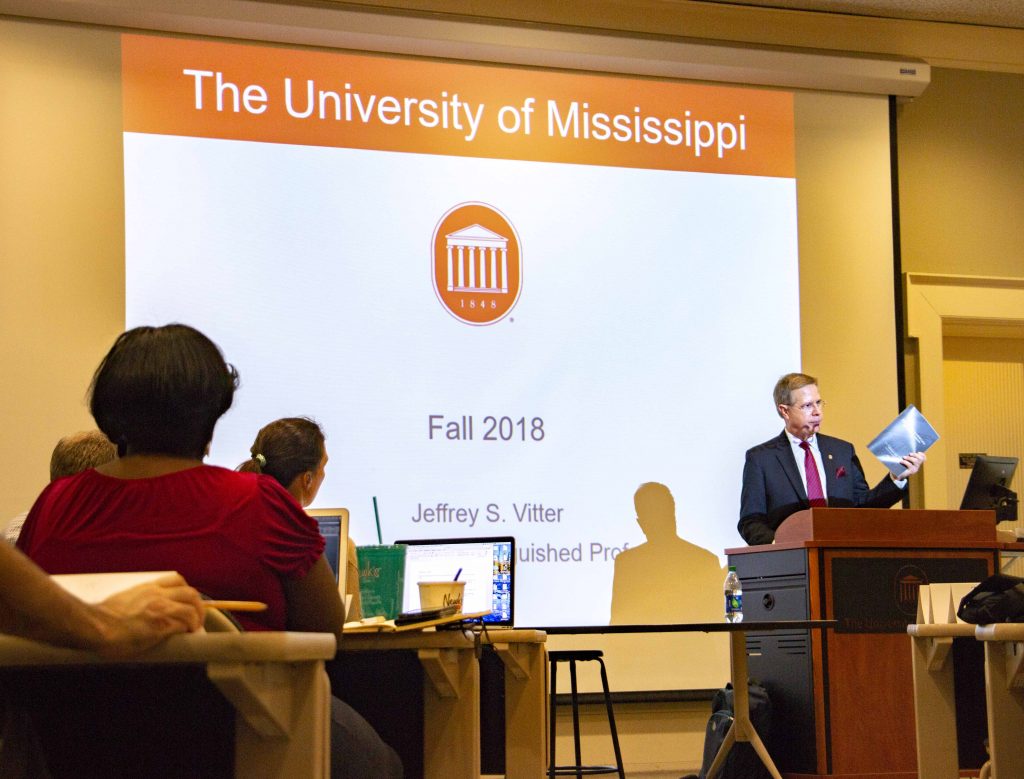Provost Noel Wilkin and Chancellor Jeffrey Vitter addressed the Faculty Senate on Tuesday night about the image of the university and commented on a quote about the university in The New Yorker magazine.
In the October issue of The New Yorker, an article entitled “The Rise and Fall of Affirmative Action” was published detailing affirmative action’s history and predicting its future. Professor of education at U.C.L.A., Pedro Noguera, compared his university to the University of Mississippi in discussing what he sees as the negative effects of affirmative action.
“You end up with the University of California at Berkeley or U.C.L.A. looking more like Ole Miss, where most of the black students are athletes, not there for academic reasons,” Noguera said in the article.
A member of the Senate brought this article to Vitter’s attention at Tuesday’s meeting.
“That unfortunately is part of the national bias that we have to deal with,” Vitter said. “We’ve got a long way to go with diversity on campus, but we’re working hard on that.”

Chancellor Jeffrey Vitter introduces the faculty senate to the “Flagship Forward” strategic plan during the Faculty Senate meeting. Photo by Abby Hamelton
Provost Wilkin said minority enrollment at Ole Miss, specifically from within the state of Mississippi, is one of the highest in the South.
”If you look at our percentages of African-American enrollment compared to other universities in the SEC, we’re number two. Mississippi State is at 20.8 (percent) of African-American undergraduate enrollment and we’re at 12.9 (percent),” Wilkin said. “This is surprising to people, and it directly speaks to the comment that was published.”
In terms of retention, Vitter and Wilkin each noted that Ole Miss has a much higher retention rate among African-American students from freshman to sophomore year than a majority of SEC universities. However, Wilkin said UM’s graduation rate among African-American students is much lower compared to other SEC schools.
“The majority of my students are African-American, and what a lot of them tell me is that they are uncomfortable on this campus, and they want to leave or that it’s a mistake for them to come here,” African-American Studies Faculty Senator Le’Trice Donaldson said.
Donaldson said she thinks removing the statue of the Confederate soldier from the Circle would be a progressive step in changing the national narrative about Ole Miss.
“How are we talking about ourselves? Rather than letting others define us and talk about us in ways we don’t like, let’s get out there and own what our image is of the university,” Wilkin said, highlighting the university’s increased usage of social media as a means of forming this new definition.
Nearly four weeks ago, UM alumnus and former Vice Chancellor for Public Relations Ed Meek drew national criticism for racist ideas presented in a post made on his personal Facebook page.
Vitter emphasized the achievements of the university over the past year. He announced that the Patterson School of Accountancy is one of the top ten in the nation, research funding on campus is up 21 percent and Ole Miss is the 12th fastest growing university in the nation, according to the Chronicle of Higher Education.
Vitter also noted that he has submitted the request to remove Ed Meek’s name from the School of Journalism and New Media to the Institutions of Higher Learning for consideration at their next Board of Trustees meeting on October 18.






